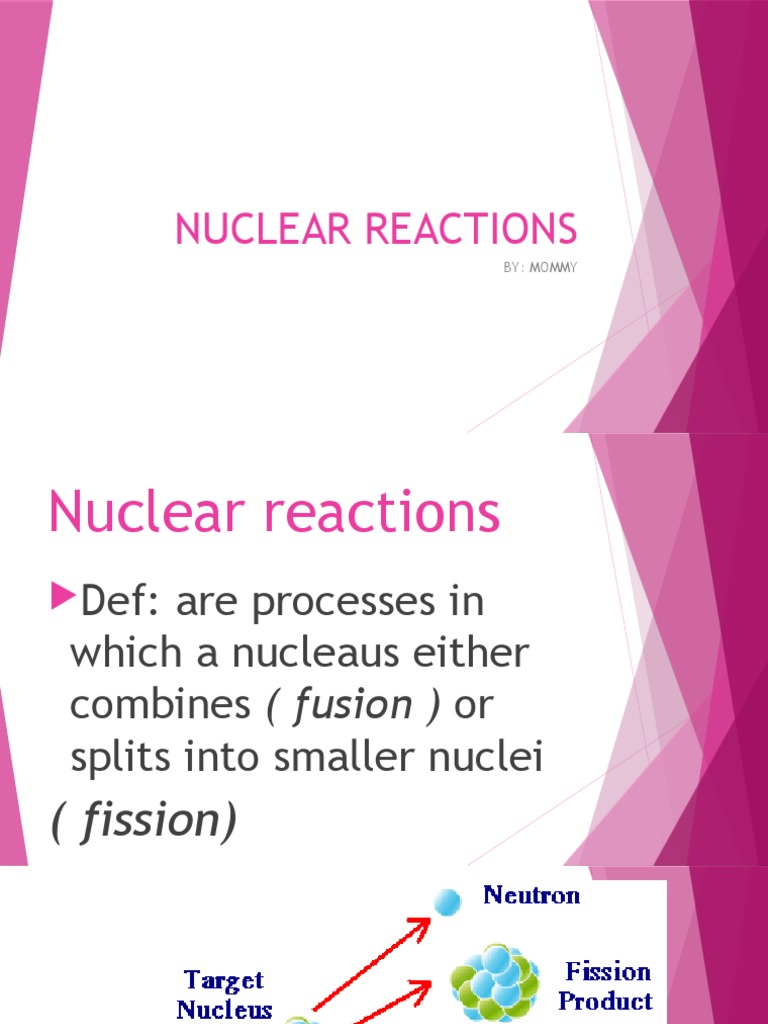Nuclear physics, a realm of science that scrutinizes the constituents and interactions of atomic nuclei, presents a profound panorama of reactions that are fundamental to both the genesis of elements and the energy harvesting processes of the universe. These reactions profoundly influence a multitude of phenomena, from the stars in the cosmos to applications on Earth such as nuclear power and medical therapies. This discourse ventures into the intricacies of nuclear reactions, illuminating their types, mechanisms, and implications in various scientific domains.
At the heart of nuclear physics lies the concept of nuclear reactions, which are defined as interactions that alter the composition or structure of an atomic nucleus. Unlike chemical reactions, which involve the electronic structure of atoms, nuclear reactions involve changes in the nucleus, often yielding new elements and isotopes. The foundation of nuclear reactions can be categorized into four principal types: fusion, fission, radioactive decay, and neutron capture. Each of these types engages different mechanisms, influences, and applications.
The first type, nuclear fusion, is a process wherein two light atomic nuclei combine to form a heavier nucleus, releasing an immense amount of energy in the process. This reaction is the primary energy source of stars, including our Sun. The physics of fusion operates under the principles of thermonuclear energy, where extreme temperatures and pressures overcome the electrostatic repulsion between positively charged nuclei. The reaction can be elegantly summarized in the fusion of hydrogen isotopes, such as deuterium and tritium, into helium, alongside the emission of neutrons and vast quantities of energy. Scientists are fervently exploring controlled fusion as a sustainable energy alternative for the future, promising a near-limitless supply of power with minimal environmental repercussions.
Conversely, nuclear fission involves the splitting of heavy nuclei into lighter fragments, accompanied by a release of energy and additional neutrons. This mechanism forms the basis of nuclear reactors and atomic bombs. When a heavy nucleus, such as uranium-235 or plutonium-239, absorbs a neutron, it becomes unstable and splits, leading to the liberation of substantial energy and further neutrons that can perpetuate the chain reaction. The intricacies of fission not only highlight the potential for energy supply but also underscore the geopolitical and ethical ramifications inherent in the control of nuclear technology.
Radioactive decay serves as a third type of nuclear reaction, a natural process wherein unstable nuclei lose energy by emitting radiation. The decay can manifest through various pathways: alpha decay, beta decay, and gamma decay. In alpha decay, a nucleus emits an alpha particle, thereby reducing its atomic mass and changing its elemental type. Beta decay entails the conversion of a neutron into a proton (or vice versa), producing a beta particle—an electron or positron—along with a neutrino. Gamma decay involves the emission of gamma radiation, which is high-energy electromagnetic radiation, resulting from the de-excitation of an excited nucleus. These decay processes possess implications beyond mere nuclear physics; they are pivotal in radiometric dating techniques, medical diagnostics, and the treatment of certain malignancies in patients.
Neutron capture, the fourth type of nuclear reaction, occurs when a nucleus absorbs a neutron, leading to the formation of a heavier isotope. This reaction is integral in the synthesis of new elements in stellar environments through the s-process (slow neutron capture) and r-process (rapid neutron capture). The r-process is particularly fascinating as it occurs during cataclysmic events like supernovae, where rapid neutron bombardment leads to the creation of heavy and unstable isotopes, some of which may be precursors to vital elements like gold and uranium. Understanding neutron capture mechanisms unveils the cosmic origins of elements and tantalizes the imagination regarding the processes that shaped our universe.
The ramifications of nuclear reactions stretch far beyond the scientific community, engendering significant ethical discussions and policy debates. The dual-use nature of nuclear technology prompts scrutiny regarding safety and proliferation. With the strides made in nuclear reactors, concerns regarding radioactive waste management and potential accidents loom large. Moreover, the prospect of nuclear fusion as a clean energy source necessitates global cooperation to mitigate financial and operational challenges while ensuring that the technology does not become a tool for nefarious ends.
The interplay of nuclear reactions with societal imperatives underscores a potent nexus of science, ethics, and policy. As researchers delve into the quantum underpinnings of these reactions, they are met with a kaleidoscope of possibilities. From energy generation to medical advancements, the transformative potential of nuclear reactions heralds both hope and trepidation. Future explorations in this domain promise to shift our understanding of matter, energy, and the very fabric of the universe, urging scientists and laypersons alike to remain vigilant and inquisitive.
In conclusion, nuclear reactions encapsulate a vast and intricate domain of study within nuclear physics. Their mechanisms not only illuminate fundamental processes of the universe but also challenge us to comprehend their broader implications. As curiosity piques and knowledge deepens, the ongoing dialogue around nuclear reactions fosters an acute awareness of our responsibilities as stewards of such powerful scientific capabilities. The relentless pursuit of understanding in the arena of nuclear physics reflects a hallmark of human curiosity and ingenuity, beckoning future generations toward uncharted territories of exploration and discovery.












